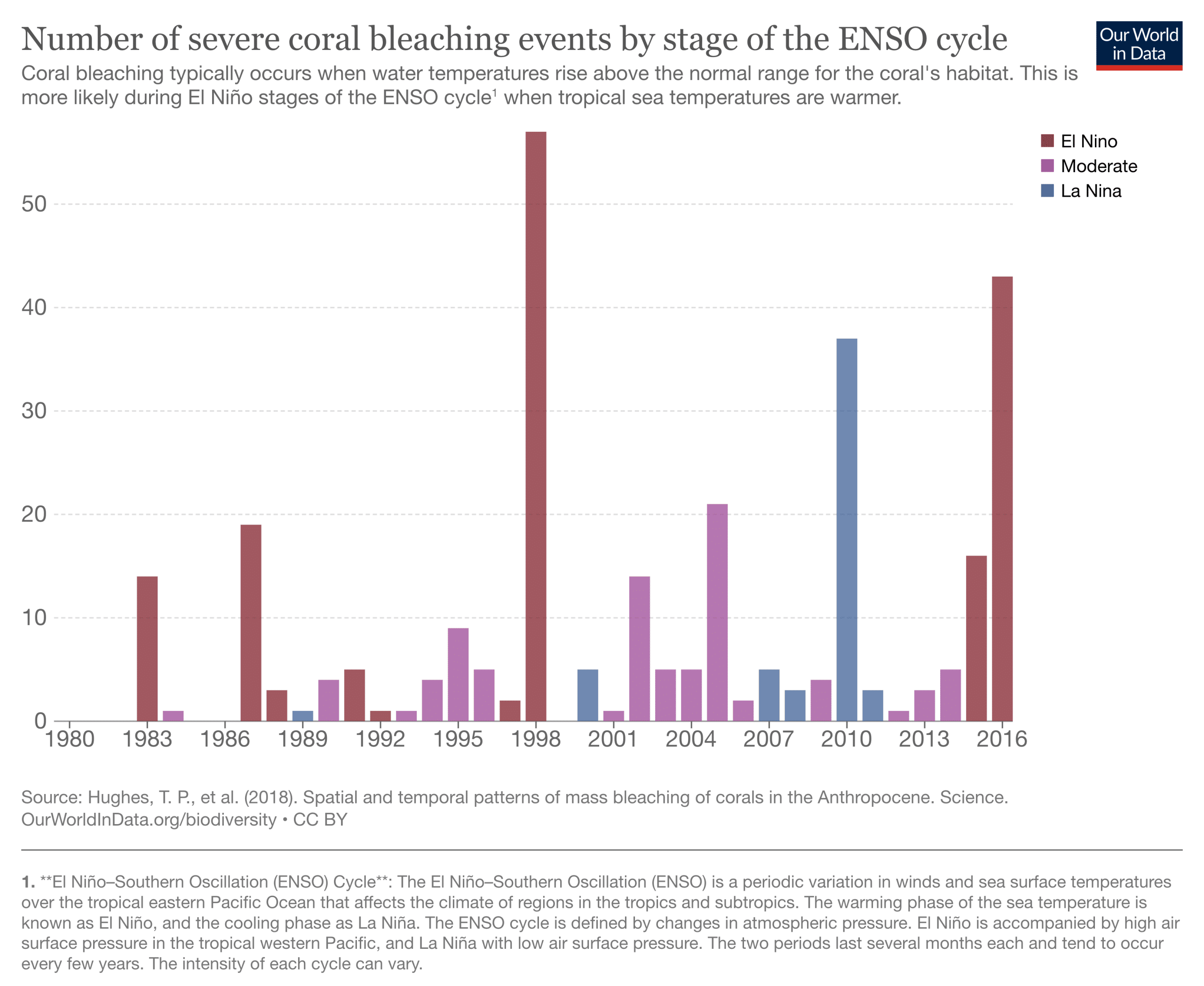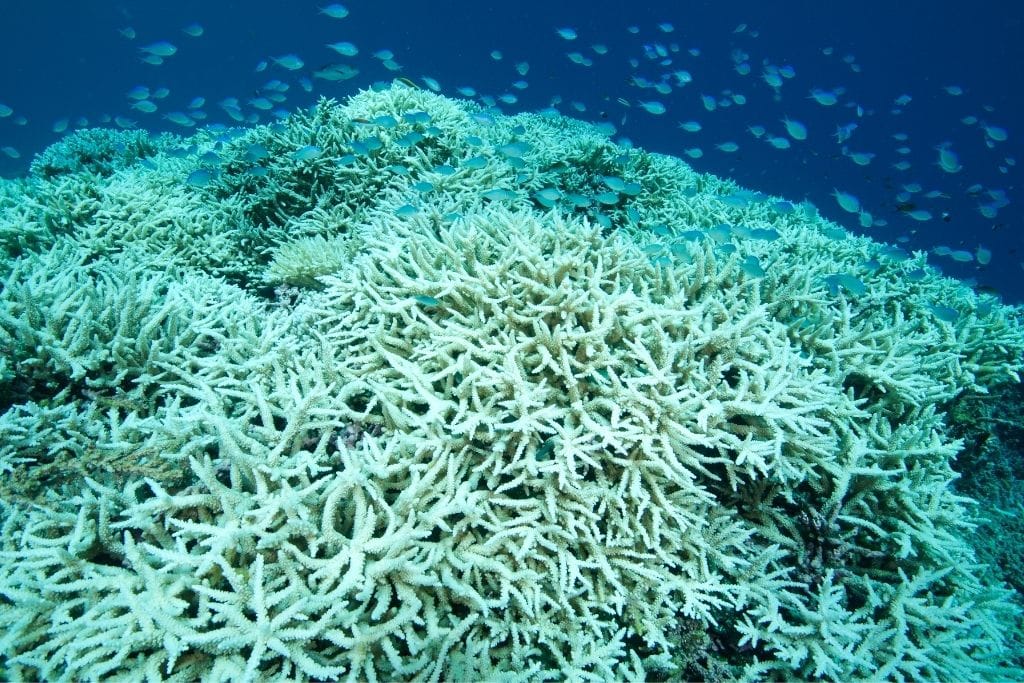Florida is the only state in the US that has “extensive” coral reef formations near its coasts that are home to barrier reefs and patch reefs. Unfortunately, due to the surge in ocean temperatures, the rich population of reefs and corals has bleached and disappeared at an alarming rate. In this article, we dive into the tribulations faced by Florida’s coral reef and what this summer’s mass coral bleaching event means for the future of marine life.
—
Marine Heatwave Strikes South Florida
According to the National Oceanic and Atmospheric Administration (NOAA), Florida’s sea surface temperatures have reached the highest level ever recorded. On July 25, 2023, a buoy in the Manatee Bay of Florida Keys measured a scorching temperature of 38.38C (101.1F), well above the average sea temperature of the area during the same period, which is typically around 30C (85F). The heating is also occurring much earlier than normal, as temperatures usually spike between August and September.
“We didn’t expect this heating to happen so early in the year and to be so extreme,” NOAA Coral Reef Watch coordinator Derek Manzello told the CNN. “This appears to be unprecedented in our records.”
On July 6, reefs managed by the Florida Aquarium reached a temperature of 32.8C (91F). While the corals were still healthy at the time of the recording, the aquarium’s crew discovered less than two weeks later that all of the corals were bleached and 80% of them had died, CNN reported.
One of the most significant features of the Florida Keys is Cheeca Rocks, as the area is known for its persistence despite unfavourable living conditions brought by climate change, most prominently, the rising sea temperatures. Nevertheless, even the most resilient coral reefs can only go so far.
Non-profit organisation Coral Restoration Foundation reports a “100% coral mortality” at Sombrero Reef in the Florida Keys. Additionally, 99% of the corals at Cheeca Rocks are bleached and the typically “resilient” corals there are also “struggling.”
“Cheeca Rocks has been, in the past, a really remarkable story of persistence,” said Ian Enochs, coral reef ecologist at NOAA. “Nonetheless, my team [has] brought back reports and photographs of absolutely widespread bleaching. Not just that, they’re already starting to see mortality.”
You might also like: The Impact of Rising Ocean Temperatures on Humans, Marine Biodiversity and Ecosystems
Coral Bleaching in Florida Waters
Coral reefs are always a sight for sore eyes due to their burst of saturated colours against the blue hue of ocean beds.
Bleaching occurs when all those colours fade, leaving a dull, sand-coloured coral. The process occurs when corals expel algae living in their tissues, draining the colours out of their surface. However, it does not mean that they are dead, they are just “under more stress” and more vulnerable.
Contrary to popular belief, bleaching events do not merely occur when water temperatures rise. Corals are generally extremely sensitive to all kinds of changes in their living conditions, including alterations in temperature, light, and even nutrients. An increase of 1C in ocean temperatures would be enough to trigger large-scale bleaching, and given that water surface temperatures in Florida have remained 2C above the normal range for an extended period of time.
Early signs of the mass bleaching event in the Florida Keys were already evident in late June. Mote Marine Laboratory confirmed 11 observations of partial bleaching, concluding that the threat of mass bleaching was “moderate.”
Florida’s mass coral bleaching unfolds amid the El Niño weather pattern that is dominating this year’s summer, causing a spike in the number of record-breaking heatwaves and floods. Our World In Data shows the positive relationship between the number of coral bleaching events and El Niño weather, with the bleaching events worldwide occurring much more frequently during El Niño than during other weather patterns.

El Niño weather conditions have a much larger number of coral bleaching events than other climate conditions. Image: Our World In Data.
Furthermore, a study published by NOAA last year showed that coral diseases caused by climate change and bleaching events had already eroded 70% of Florida’s corals, reporting that Florida reefs are in a “net erosional state.” Most shockingly, the highest percentage of net erosional reefs was found in the northernmost region of South Florida, where 98% of reefs had been eroded.
The research study further concluded that the reef systems have been negatively changed over the last 50 years, resulting in the presence of “opportunistic weedy species” rather than the old “dominant habitat-creating” corals. In other words, corals have systematically grown weaker.
Despite occupying less than 1% of the ocean beds, corals play an important role for marine ecosystems. According to the United Nations, they could be regarded as “underwater cities” since they house up to 800 different hard coral species and more than 25% of marine creatures. Losing ten coral reefs means losing hundreds of coral species and marine life.
With a flourishing coral reef system, there will be flourishing businesses. Corals in the Florida Keys have generated billions of dollars for the state’s economy through fishing and tourism. According to NOAA and National Marine Sanctuaries, Florida’s corals have an asset value of US$8.5 billion, granting 70,400 jobs in local communities.
If coral reefs continue to bleach and die at this staggering rate, experts warn, we will experience an imminent plethora of consequences.
According to The Reef-World Foundation, over one million species that depend on coral reefs will die, establishing a chain effect of dying species. Coastal tourism businesses and the fishing industry will phase out, bringing down the state of the economy and diminishing job opportunities. Additionally, medical studies will be severely hindered as coral reefs are used to develop medicine for sicknesses including Alzheimer’s and heart diseases.
Some Hope Left for Coral Reefs
Since the horrific mass bleaching event has already occurred, we are already beyond looking into preventative actions. Instead, what we must prioritise is salvaging the surviving species.
On a more positive note, the persistent corals in Cheeca Rocks are being studied, as scientists want to examine the “potential mechanisms of resilience” and apply them to other areas with corals. There have also been efforts in finding unique genotypes that are responsible for resilience to high temperatures.
Most importantly, vestiges of saved corals have been extracted and put into labs like the Florida Institute of Oceanography’s Keys Marine Laboratory (KML). The lab already has around 1,500 corals in an attempt to rescue the coral species. The population is expected to grow to 5,000.
Nonetheless, coral reefs were never made to adapt above the seas. We must remember that their rightful home is the ocean floor, not science laboratories. If we wish to see the colourful sights underwater, mitigating climate change and global warming is the one and only solution.
You might also like: 5 Coral Reefs That Are Currently Under Threat and Dying


















